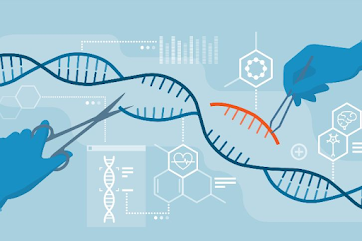Bioinformatics is an interdisciplinary field that combines biology, computer science, mathematics, and statistics to analyze and interpret biological data, particularly at the molecular level. It plays a crucial role in various areas of biological research, including genomics, proteomics, evolutionary biology, structural biology, and systems biology. Here's a detailed overview of bioinformatics:
Introduction to Bioinformatics:- Bioinformatics emerged as a response to the explosion of biological data generated by advancements in high-throughput technologies such as DNA sequencing, microarrays, and mass spectrometry.
- Its primary goal is to develop computational tools and methods to store, organize, analyze, and interpret biological data.
Key Areas of Bioinformatics:
- Genomics: Genomics involves the study of the complete DNA sequence of an organism. Bioinformatics tools are used to assemble, annotate, and analyze genomes.
- Proteomics: Proteomics focuses on the study of the structure, function, and interactions of proteins. Bioinformatics helps in analyzing protein sequences, predicting their structures, and identifying protein-protein interactions.
- Transcriptomics: Transcriptomics deals with the study of gene expression patterns, including mRNA transcripts. Bioinformatics tools are used for analyzing gene expression data obtained from techniques like microarrays and RNA sequencing.
- Metagenomics: Metagenomics involves the study of genetic material recovered directly from environmental samples. Bioinformatics plays a vital role in analyzing metagenomic data to understand microbial communities and their functions.
- Structural Biology: Structural biology aims to understand the three-dimensional structure of biological macromolecules such as proteins and nucleic acids. Bioinformatics tools help in predicting protein structures, modeling protein-ligand interactions, and studying molecular dynamics.
- Systems Biology: Systems biology integrates experimental and computational approaches to understand the complex interactions within biological systems. Bioinformatics tools are used to model biological networks, predict cellular behaviors, and simulate biological processes.
Bioinformatics Techniques and Tools:
- Sequence Alignment: Sequence alignment algorithms (e.g., BLAST, ClustalW) are used to identify similarities and differences between biological sequences such as DNA, RNA, and proteins.
- Genome Assembly: Genome assembly algorithms reconstruct complete genome sequences from fragmented DNA sequencing data obtained from techniques like next-generation sequencing (NGS).
- Gene Prediction: Gene prediction algorithms identify the location and structure of protein-coding genes within a genome based on sequence information.
- Functional Annotation: Functional annotation tools assign biological functions to genes and proteins by comparing them to databases of known sequences and functional domains.
- Phylogenetics: Phylogenetic analysis methods reconstruct the evolutionary relationships between species or genes based on sequence similarity or other evolutionary markers.
- Structural Prediction: Structural prediction algorithms predict the three-dimensional structure of proteins based on their amino acid sequences, utilizing techniques such as homology modeling and ab initio modeling.
- Data Integration and Visualization: Bioinformatics platforms and software tools facilitate the integration of diverse biological data types and provide interactive visualization for data exploration and interpretation.
Challenges and Future Directions:
- Data Volume and Complexity: The increasing volume and complexity of biological data pose challenges in terms of storage, processing, and analysis. Bioinformatics methods need to continually evolve to handle large-scale datasets efficiently.
- Data Integration: Integrating heterogeneous biological data from multiple sources remains a significant challenge, requiring the development of standardized formats, ontologies, and interoperable databases.
- Algorithm Development: There is a continuous need for the development of advanced algorithms and computational techniques to address emerging biological questions and analyze complex biological phenomena.
- Machine Learning and Artificial Intelligence: Machine learning and AI techniques hold promise for advancing bioinformatics by enabling the development of predictive models, pattern recognition algorithms, and personalized medicine approaches.
- Ethical and Legal Issues: Bioinformatics raises ethical and legal concerns related to data privacy, informed consent, intellectual property rights, and the responsible use of genetic information.





